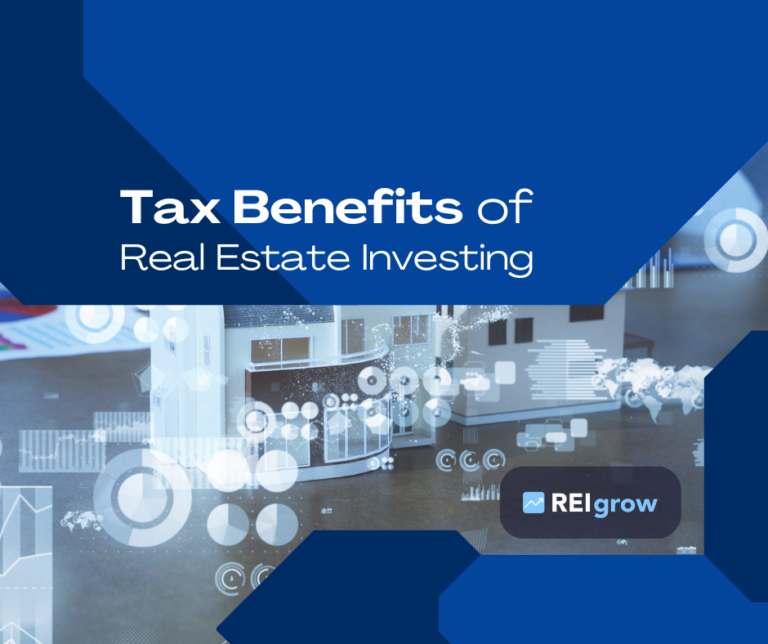Guide to Buy and Hold Real Estate Investing
The allure of steady passive income and potential appreciation over time is undeniable in buy and hold real estate investing. But, there’s more to this approach than meets the eye.
You can set yourself up for success in your market if you understand the fundamental principles and key considerations of buy and hold real estate investing strategy.
What is Buy and Hold Real Estate Investing Strategy?
The strategy involves purchasing properties to keep them long-term for a steady income and wealth growth.
Unlike quick flipping, this strategy focuses on renting out properties for recurring income and potential value appreciation.
It requires patience and upkeep to attract tenants and benefit from market trends over time.
Steps to Buy and Hold Real Estate Investing
1. Find the Right Property
Selecting the right property sets the stage for a rewarding real estate investing journey.

Here are some key factors to consider:
- Location: Prioritize areas with ample job opportunities, safe neighborhoods, good schools, and convenient amenities nearby.
- Growth potential: Study local real estate trends to ensure property values are on an upward trajectory for a profitable investment. Seek out properties that are likely to increase in value over time and offer steady rental income.
- Property Condition: Assess the property’s current state and any necessary repairs or upgrades before purchasing it.
2. Finance the Property
Investors should evaluate various funding options available to finance a buy-and-hold property.
You may consider traditional mortgages, government-backed loans, or private financing.
Start by checking with banks or credit unions for competitive interest rates.
Government-backed loans like FHA loans are great for lower down payments. Private or hard money lenders can help if you need quick financing.

The amount you need for a down payment varies based on the loan type, typically ranging from 3% to 20% or more of the property’s price. A higher down payment often results in lower interest rates.
Compare loan terms, interest rates, and fees from various lenders to choose the best option.
3. Upgrade the Property
Renovations can make a buy-and-hold property more appealing to potential tenants and increase its market value. You can, for instance:
- Update the kitchen and bathrooms to give them a modern looke the property’s appeal
- Improve the curb appeal with landscaping, fresh paint, and a welcoming entrance
- Spruce up key features like flooring, lighting, and appliances
- Install energy-saving windows, HVAC systems, and insulation
4. Manage the Property
Property maintenance is key to keeping your investment in top shape. Regular upkeep and timely fixes help maintain the property’s value and attract dependable tenants.
Address tenant concerns promptly to build a positive relationship. Keeping detailed financial records and tracking rental payments ensures steady cash flow. Investors should also save for unexpected expenses.
Clear communication, addressing concerns promptly, and treating tenants fairly lead to satisfaction and long-term occupancy.
Consider hiring a property management company if you prefer a hands-off approach
5. Prepare for Unexpected Circumstances
When you invest in real estate for the long term, it’s smart to be ready for surprises.
Therefore, be sure to set up an emergency fund and get the right insurance coverage.
An emergency fund can help cover unexpected costs that may come up with your property, giving you a safety net and peace of mind. Managing risks effectively is key to protecting your buy-and-hold investment in the long run.
Here are three important things to think about when getting ready for the unexpected:
- Smart money management: Make sure your emergency fund can pay for about three to six months of your property expenses.
- Routine checks: Inspect your buy-and-hold investment property regularly. This helps catch problems early and preempts the need for major repairs later on.
- Insurance protection: Get sufficient insurance coverage for your property. This can help if there’s damage, legal claims, or other unexpected events.
The real estate investing market will keep changing over time. Therefore, investors should stay adaptable.
Are Buy and Hold Real Estate Investments Good?
Investing in buy and hold real estate can be a smart way to grow your wealth over time.
Holding onto properties over time allows you to benefit from their increasing value, rental income, and tax perks.
Real estate has a history of being a reliable investment, acting as a safeguard against rising prices and adding variety to your investment mix.

Unlike stocks that can be unpredictable, real estate investing tends to offer more stability over time.
Plus, you can amplify your gains by using mortgage financing.
But, you should be aware of the risks, like how the market can impact property prices and demand for rentals.
To reduce these risks, keep an eye on how the market is doing and have a plan in case you need to sell or change your investment approach.
Overall, buy and hold real estate investments can be a solid strategy for those seeking gradual wealth accumulation with lower risks.
How to Find New Opportunities for Buy-and-Hold Real Estate Investing
Finding the right properties at the right price is key to grow your buy-and-hold portfolio! This is where an advanced real estate investing platform like REI Grow can help. REI Grow helps real estate investors find motivated sellers and distressed properties at low price points.
So, how does REI Grow work for buy and hold real estate investors?
- Targeted Seller Lists: REI Grow provides you with motivated seller lists, so you can focus your efforts on properties that align with your investment goals. No more wasting time on properties that don’t fit the bill.
- Automated Campaigns: You can set up automated and fully-compliant text, email, and voice campaigns on the go. Once you have setup your campaigns with a few simple steps, you can continue reaching sellers without lifting a finger – that’s the power of automation in real estate investing!
- AI Assistant: Need help scheduling appointments? Can it converse with the leads? AI assistant can take care of all the nitty-gritty details, so you can focus on closing deals.
With REI Grow, most of your outreach can be automated, allowing you to scale your real estate investment efforts like never before.
Pros and Cons of Buy and Hold Real Estate Investing Strategy
As an investor, you must set realistic expectations for your investment ventures.
Therefore, you should gain a thorough understanding of the advantages and drawbacks associated with buy-and-hold real estate investments.
Here’s what to keep in mind:
- Benefits over time, risks in the short run: Buy and hold REI strategies can lead to long-term gains as property values usually rise. Yet, short-term risks like market changes or unexpected costs can affect cash flow.
- Passive income: Rent out the property to generate a steady income stream without active involvement.
- Consistency: Buy and hold investments typically provide a stable income stream and the potential for long-term property value growth.
- Tax advantages: Investors can avail of tax perks like expense deductions and depreciation benefits.
Buy and Hold vs Fix and Flip Real Estate Investing Strategy
Fix and flip real estate investment strategy involves buying, renovating, and quickly selling a distressed property for profit.
Yes, it can bring rapid returns. But, this investment strategy carries higher risks and demands more hands-on work.
Buy and hold is considered a more passive and stable option. This strategy demands careful risk management and patience as your market evolves.
Consider your financial goals, risk tolerance, and how involved you want to be before picking the best strategy for your real estate investment goals.
Buy and Hold Vs Real Estate Wholesaling
Here’s what you need to know to grasp the key differences in these investment approaches:
- Time commitment: Wholesaling requires quick transactions and active involvement, while buy and hold needs a longer commitment with potential for passive income.
- Risk vs. Reward: Real estate wholesaling may bring quick profits but carries higher risks, whereas buy and hold offers steady appreciation and income over time.
- Skillset: Wholesaling demands actively searching for deals, connecting with cashbuyers, negotiating contracts, and keeping the flow going. It demands constant hustling and negotiation skills. Buy and hold investors often need property management expertise for long-term ownership.
- Building a portfolio vs. quick flips: Buy and hold real investors focus on building a portfolio of properties that appreciate and yield consistent cash flow over time. Meanwhile, wholesalers concentrate on flipping contracts of properties swiftly for profit without the commitment of long-term ownership.
Carefully assess your resources, preferences, and objectives. Pick the strategy that best suits your needs and aspirations in the market.
Buy and Hold Vs Real Estate Investment Trusts (REITs)
Both of these real estate investment strategies help generate passive income.
Buy and hold method allows you to pick properties, make management decisions, and potentially increase your cash flow over time.
For instance, you might buy a discounted abandoned property, convert it into a rental and earn a passive income while it appreciates in value. You retain control throughout the entire process.
Real Estate Investment Trusts (REITs) are companies that own, operate, or finance income-generating real estate in various property sectors.
They help investors gain access to real estate markets without direct property ownership. Investors earn passive income through dividends distributed by the trust.
Thus, REITs can help diversify your portfolio, increase liquidity, and maintain exposure to real estate without needing to manage properties directly
However, you sacrifice the direct control and personalization that come with owning individual properties.
Frequently Asked Questions about Buy and Hold Real Estate Investing
1. How can I determine the best location for buy and hold real estate investing?
Research key factors like job growth, population trends, school ratings, and crime rates.
Focus on neighborhoods with potential for long-term appreciation and strong rental demand.
2. What are some common challenges that buy and hold real estate investors face?
Common challenges include tenant turnovers, property maintenance costs, market fluctuations affecting rental income, and unexpected repairs.
3. How can I finance a buy-and-hold real estate investment property?
Research mortgage options, improve your credit score, save for a down payment, and consider working with lenders specializing in investment properties.
Compare buy-and-hold real estate loan rates and terms to find the best deal.
4. What are some tax implications to consider with buy and hold real estate investing?
Factors like rental income, property depreciation, and capital gains impact your tax obligations.
A tax professional can help you deal with these complexities.
5. How can I maximize returns from from this strategy?
Source motivated seller leads and nurture them with automated campaigns to uncover distressed properties that you can purchase at a discount.
Focus on setting competitive rent rates and keep the property well-maintained (post renovations, if any) to attract quality tenants.
You can also offer amenities that add value. Regularly review and adjust your rental strategy to optimize returns.
6. How can I protect my buy and hold real estate investment from market fluctuations?
Diversify your real estate investment portfolio to reduce risks. Investors should also consider insurance options to mitigate unforeseen events.
Lastly, stay abreast of the market trends to make timely and informed decisions.


